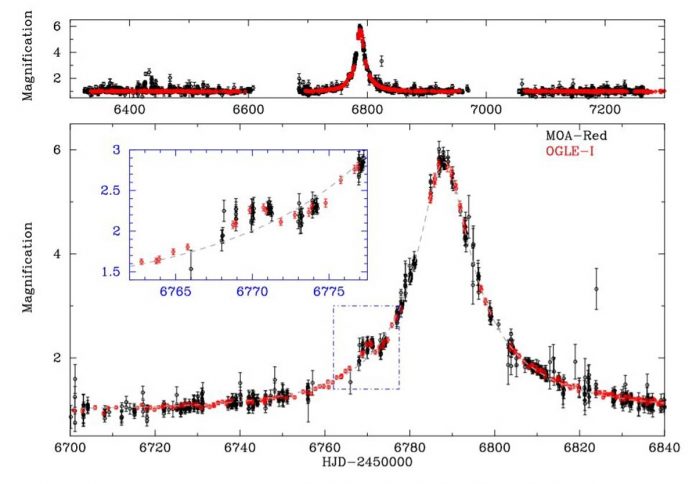Astronomers have reported the detection of a new sub-Jupiter-mass alien world orbiting an M-dwarf star. The have named it as OGLE-2014-BLG-0319Lb. The new found planet is about half as massive as Jupiter. The discovery was published in the arXiv pre-print repository.
Scientists have used the microlensing method which is mainly used to detect planetary and stellar-mass objects regardless of the light they emit. This technique is sensitive to the mass of the objects and not on their luminosity. This allows the astronomers to study objects that emit little or no light at all.
The discovery of OGLE-2014-BLG-0319 was announced by the Optical Gravitational Lensing Experiment (OGLE) collaboration. This was also detected by the Microlensing Observations in Astrophysics (MOA) team.
Osaka University researchers have analysed this microlensing event. This has revealed the signal indicating the presence of a planetary object. Planetary signals in microlensing events are short-lived anomalous deviations from typical single-lens light curves. These produce a degeneracy problem where several model interpretations are possible for an anomaly.
Scientists analysed three different models. Scientists found the newfound planet has a mass of about 0.49 Jupiter masses. It orbits its host some 3.49 AU from it. The host star is an M dwarf with a mass of some 0.47 solar masses. It is located near the Galactic bulge which is 25,200 light years away from the Earth.
Scientists think that high-angular resolution might be able to shed more light on the properties of the newfound star. They think, more years are needed to resolve the lens position and detect the lens flux.
The new study underlined the degeneracy problem of detecting new exoplanets by investigating microlensing events. Astronomers think this problem would be more common for short timescale events. This will have large impacts on the estimation for the frequency of such planets.

